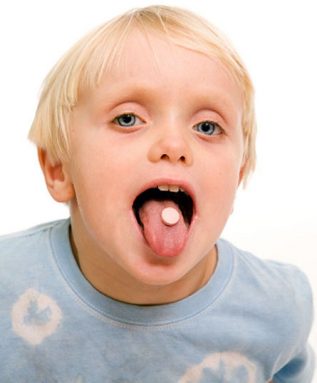Sugar-pill medicine
Just expecting to feel better can sometimes cure what’s ailing you
By Susan Gaidos
 |
|
Fake medicine, such as a pill filled with sugar, can sometimes make the people taking it feel better. |
| Rapideye / iStockphoto |
Feeling sick? You wouldn’t want to take fake medicine for an earache or major illness. But in some cases, the fake stuff can help.
Studies have long shown that fake medicines, or placebos, can produce the same healing effect as an active drug. This phenomenon is known as the placebo effect.
Placebos come in the form of sugar pills, fake creams or other substances. Medical researchers use placebos in experiments designed to test drugs. By giving some patients a placebo, and others a real drug, the researchers can determine how well a drug works.
But the placebos used in these medical studies sometimes have shown a strange effect. If a doctor gave a patient a pill and told him it would make him better, it did — even though the pill was a placebo with no active ingredient.
Now, scientists have figured out how placebos work their magic. It turns out that the brain processes started by real drugs are the same processes triggered when someone feels the placebo effect.
Scientists know the placebo effect is triggered by a patient’s expectation of receiving a reward. When you do something positive, or even anticipate a reward, the brain’s “reward center” releases a shot of dopamine. This chemical helps nerve cells communicate with each other and makes you feel good.
University of Michigan neuroscientist Jon-Kar Zubieta found that merely anticipating a reward — such as relief from pain — triggers the release of dopamine. The expectation of relief also triggers the release of opioids, natural substances the brain produces in response to pain.
Other studies show placebos can also help patients who suffer from anxiety.
Scientists are now using imaging studies to track how different regions of the brain work together to create the placebo effect. Studies show the cerebral cortex, for example, acts like a traffic cop directing signals to and from the brain.
Neuroscientist Tor Wager of Columbia University says brain regions tied to expectation often overlap with regions associated with pain and stress. This is because pain and stress go hand-in-hand with how a person feels.
“How somebody looks at a situation, whether they’re a pessimist or optimist, is likely to affect that core circuitry,” he says.
Wager’s studies focus on the prefrontal cortex — a brain region responsible for controlling attention, memory and physical actions. It’s also involved with math (especially in kids) and language. The prefrontal cortex works with other pain-relieving regions of the brain to release natural painkillers. Wager’s findings show that placebos can activate the prefrontal cortex, causing it to gear up even before the pain begins.
Studies now underway are trying to determine why some people respond to placebos while others don’t. Other studies are needed to better understand how placebos work in the brain.
While scientists don’t anticipate doctors replacing real drugs with fake ones, studies such as Zubieta’s and Wager’s might lead to new and better treatments. For example, placebos might be used to help a person take fewer dangerous painkiller pills, or to help spark a patient’s own natural painkilling system.
Going Deeper:







